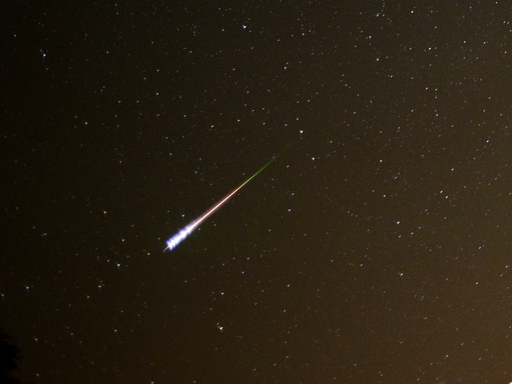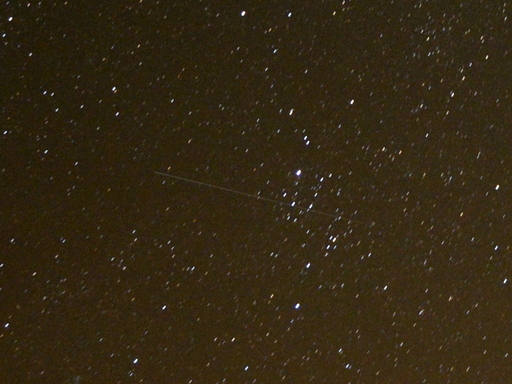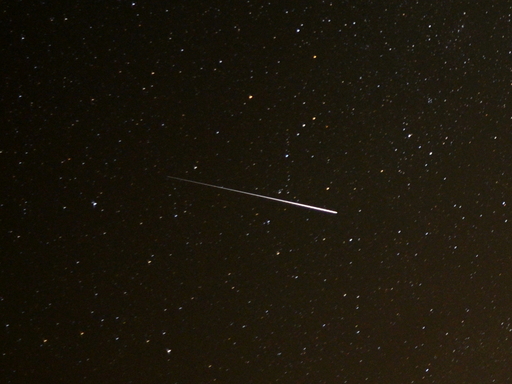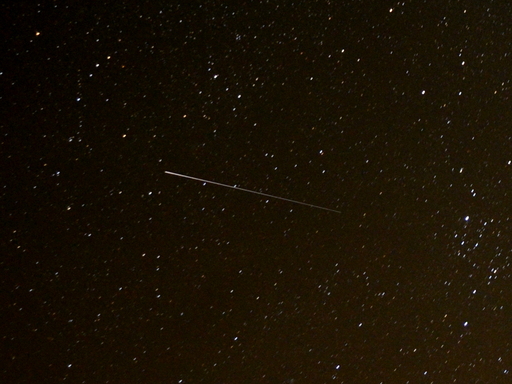« July 2015 | Main | September 2015 »
Monday, August 31, 2015
Reading List: Trustee from the Toolroom
- Shute, Nevil. Trustee from the Toolroom. New York: Vintage Books, [1960] 2010. ISBN 978-0-345-02663-7.
- Keith Stewart is an unexceptional man. “[Y]ou may see a little man get in at West Ealing, dressed in a shabby raincoat over a blue suit. He is one of hundreds of thousands like him in industrial England, pale-faced, running to fat a little, rather hard up. His hands show evidence of manual work, his eyes and forehead evidence of intellect.” He earns his living by making mechanical models and writing articles about them which are published, with directions, in the London weekly Miniature Mechanic. His modest income from the magazine has allowed him to give up his toolroom job at an aircraft subcontractor. Along with the income his wife Katie earns from her job in a shop, they make ends meet and are paying down the mortgage on their house, half of which they rent out. Keith's sister Jo married well. Her husband, John Dermott, is a retired naval officer and nephew of Lord Dungannon, with an independent income from the family fortune. Like many people in postwar Britain, the Dermotts have begun to chafe under the ceaseless austerity, grey collectivism, and shrinking freedom of what was once the vanguard of civilisation and have decided to emigrate to the west coast of Canada, to live the rest of their lives in freedom. They've decided to make their journey an adventure, making the voyage from Britain to Vancouver through the Panama Canal in their modest but oceangoing sailboat Shearwater. Keith and Katie agree to look after their young daughter Janice, whose parents don't want to take out of school and who might not tolerate a long ocean voyage well. Tragedy befalls the Dermotts, as they are shipwrecked and drowned in a tropical storm in the Pacific. Keith and Katie have agreed to become Janice's trustees in such an event and, consulting the Dermotts' solicitor, are astonished to learn that their fortune, assumed substantial, has almost entirely vanished. While they can get along and support Janice, she'll not be able to receive the education they assumed her parents intended her to have. Given the confiscatory capital controls in effect at the time, Keith has an idea what may have happened to the Dermott fortune. “And he was the trustee.” Keith Stewart, who had never set foot outside of England, and can barely afford a modest holiday, suddenly finds himself faced with figuring out how to travel to the other side of the world, to a location that isn't even on his map, and undertake a difficult and risky mission. Keith discovers that while nobody would recognise him on the street or think him out of the ordinary, his writing for Miniature Mechanic has made him a celebrity in what, more than half a century later, would be called the “maker subculture”, and that these people are resourceful, creative, willing to bend the rules to get things done and help one another, and some dispose of substantial wealth. By a chain of connections which might have seemed implausible at the outset but is the kind of thing which happens all of the time in the real world, Keith Stewart, modelmaker and scribbler, sets out on an epic adventure. This is a thoroughly satisfying and utterly charming story. It is charming because the characters are such good people; the kind you'd feel privileged to have as friends. But they are also realistic; the author's career was immersed in the engineering and entrepreneurial milieu, and understands these folks in detail. This is a world, devoid of much of what we consider to be modern, you'll find yourself admiring; it is a joy to visit it. The last two paragraphs will make you shiver. This novel is currently unavailable in a print edition, so I have linked to the Kindle edition in the head. Used paperback copies are readily available. There is an unabridged audio version of this book.
Saturday, August 29, 2015
Reading List: From the Dissident Right
- Derbyshire, John. From the Dissident Right. Litchfield, CT: VDare.com, 2013. ISBN 978-1-304-00154-2.
- This is a collection of columns dating from 2001–2013, mostly from VDare.com, but also from Taki's Magazine (including the famous “The Talk: Nonblack Version”, which precipitated the author's departure from National Review). Subtitled “Essays on the National Question”, the articles mostly discuss the composition of the population and culture of the United States, and how mass immigration (both legal and illegal) from cultures very different from that of the largely homogeneous majority culture of the U.S. prior to the Immigration and Nationality Acy of 1965, from regions of the world with no tradition of consensual government, individual and property rights, and economic freedom is changing the U.S., eroding what once contributed to its exceptionalism. Unlike previous waves of immigration from eastern and southern Europe, Ireland, and Asia, the prevailing multicultural doctrine of ruling class élites is encouraging these new immigrants to retain their languages, cultures, and way of life, while public assistance frees them from the need to assimilate to earn a living. Frankly discussing these issues today is guaranteed to result in one's being deemed a racist, nativist, and other pejorative terms, and John Derbyshire has been called those and worse. This is incongruous since he is a naturalised U.S. citizen who immigrated from England married to a woman born in China. To me, Derbyshire comes across as an observer much like George Orwell who sees the facts on the ground, does his research, and writes with an unrelenting realism about the actual situation with no regard for what can and cannot be spoken according to the guardians of the mass culture. Derbyshire sees a nation at risk, with its ruling class either enthusiastically promoting or passively accepting its transformation into the kind of economically stratified, authoritarian, and impoverished society which caused so many immigrants to leave their nations of origin and come to the U.S. in the first place. If you are a Kindle Unlimited subscriber, the Kindle edition is free. This essays in this book are available online for free, so I wouldn't buy the paperback or pay full price for the Kindle version, but if you have Kindle Unlimited, the price is right.
Friday, August 14, 2015
Reading List: Seveneves
- Stephenson, Neal. Seveneves. New York: William Morrow, 2015. ISBN 978-0-06-219037-6.
-
Fiction writers are often advised to try to immediately grab the
attention of readers and involve them in the story. “If you
haven't hooked them by the end of the first chapter, you've probably
lost 'em.” Here, the author doesn't dawdle. The first
line is “The Moon blew up without warning and
for no apparent reason.” All right, now that's an
interesting premise!
This massive novel (880 pages in the hardcover print edition) is
divided into three parts. In the first, after the explosion of the Moon,
scientist and media talking head Dubois Jerome Xavier Harris (“Doob”),
a figure much like
Neil deGrasse Tyson
in real life, calculates that the seven large fragments of the exploded moon will
collide with one another, setting off an exponential cascade of fragmentation
and further collisions like the
Kessler syndrome for
objects in low Earth orbit, with enough the scattered debris bombarding the
Earth to render its surface uninhabitable for on the order of five thousand
years.
The story begins in the near future, when the International Space Station
(“Izzy”) has been augmented with some additional
facilities and a small nickel-iron asteroid retrieved and docked
to it for asteroid mining experiments. Technology is much as at the
present, but with space-based robotics having advanced significantly.
Faced with what amounts to a death sentence for the Earth (the heat from the
impacts was expected to boil off much of the oceans and eject the atmosphere
into space), and having only around two years before the catastrophic
bombardment begins, spacefaring nations make plans to re-purpose Izzy as
a “Cloud Ark” to preserve the genetic heritage of the Earth
and the intellectual capital of humanity against the time when the home
planet can again be made habitable. Thus begins a furious technological
crash project, described in detail, working against an inexorable
deadline, to save what can be saved and launch it to the fragile ark
in space.
Eventually the catastrophe arrives, and the second part of the novel
chronicles the remnant of humanity on the Cloud Ark, with Izzy as its
core, and most of the population in co-orbiting rudimentary habitats.
From the start there are major technical challenges to overcome, with
all involved knowing that high technology products from Earth
such as silicon chips and laboratory equipment may not be able to be
replaced for centuries, if ever. The habitat ecosystem must be closed,
as there will be no resupply. And, people being people, the society of
the survivors begins to fragment into factions, each with its own
priorities and ideas about how to best proceed. Again, there is much
technological derring-do, described in great detail (including one of the
best explanations of the fundamentals of orbital mechanics I've
encountered in fiction). The heroic exploits of the survivors are the
stuff of legend, and become the legends of their descendents.
Part three of the novel picks up the story five thousand years later,
when the descendants of the Cloud Ark have constructed a mature
spacefaring civilisation, tapping resources of the solar system, and
are engaged in restoring the Earth, now that the bombardment has abated,
to habitability. The small population of the Cloud Ark has put the human
race through a serious genetic bottleneck with the result that the species
has differentiated into distinct races, each with its own traits and
behavioural characteristics, partly determined by genetics and partly transmitted
culturally. These races form alliances and conflict with one another,
with humanity having sorted itself into two factions called Red and
Blue (gee, how could such a thing happen?) which have largely separated
into their own camps. But with possession of the Earth at stake, Red
and Blue have much to dispute, especially when enigmatic events on
that planet call into the question their shared history.
This is a rather curious book. It is so long and intricate that there's
room for a lot in here, and that's what the reader gets. Some of it is
the hardest of hard science fiction, with lengthy technical explanations
which may make those looking for a fast moving story yawn or doze off.
(In fact, there are parts where it seems like the kind of background notes
science fiction authors make to flesh out their worlds and then include
random portions as the story plays out have, instead, been dumped wholesale
into the text. It's as if Obi-Wan shows Luke his father's light sabre,
then spends ten minutes explaining the power pack, plasma containment
system, field generator, and why it makes that cool sound when you
wave it around.) The characters seem to be archetypes of particular
personality traits and appear to be largely driven by them rather than
developing as they face the extraordinary challenges with which they're
presented, and these stereotypes become increasingly important as the
story unfolds.
On balance, I'm glad I read this book. It's a solid, well-told yarn which will
make you think about just how humans would respond faced with a near-term
apocalypse and also whether, given how fractious and self-destructive
they often are, whether they are likely to survive or, indeed, deserve to.
I believe a good editor could have cut this manuscript in half, sacrificing
nothing of importance, and making the story move along more compellingly.
And now there are a number of details about the novel which I cannot
discuss without spoiling the plot and/or ending, so I'll take them
behind the curtain. Do not read the following unless you've
already read the novel or are certain you will never do so.
Spoiler warning: Plot and/or ending details follow.At the start of the novel the nickel-iron asteroid “Amalthea” has been docked to Izzy for experiments in asteroid mining. This asteroid is described as if “laid to rest on a soccer field, it would have stretched from one penalty box to the other and completely covered the center circle.” Well, first of all, this is not the asteroid 113 Amalthea of our solar system, which is a much larger rocky main belt asteroid—46 km in size. Why one would name an asteroid brought to the space station the same as a very different asteroid known since 1871 escapes me. Given that the space station does various maneuvers in the course of the story, I was curious about the mass of the asteroid. Assuming it is a prolate ellipsoid of revolution with semi-principal axes of 9.15, 9.15, and 36 metres (taken from the dimensions of a standard soccer field), its volume would be 12625 m³ and, assuming the standard density of 5.32 g/cm³ for metallic asteroids, would have a mass of 67170 tonnes, which is 1.3 times the mass of the Titanic. This is around 150 times the present mass of the International Space Station, so it would make maneuvers, especially those done later in the book, rather challenging. I'm not saying it's impossible, because complete details of the propulsion used aren't given, but it sure looks dodgy, and even more after the “megaton of propellant” mentioned on p. 493 is delivered to the station. On p. 365 Izzy is said to be in an orbit “angled at about fifty-six degrees to the equator”. Not so; its inclination is 51.6°. On p. 74 the arklets are said to “draw power from a small, simple nuclear reactor fueled by isotopes so radioactive that they would throw off heat, and thereby generate electricity, for a few decades.” This is describing a radioisotope thermoelectric generator, not a nuclear reactor. Such generators are usually powered by plutonium-238, which has a half-life of 87.7 years. How would such a power source sustain life in the arklets for the five thousand years of exile in space? Note that after the Hard Rain, resources to build new nuclear reactors or solar panels would not be available to residents of the Cloud Ark. When the Ymir makes its rendezvous with Izzy, it jettisons its nuclear reactor to burn up in the Earth's atmosphere. Why would you discard such an irreplaceable power source? If you're worried about radiation, place it into a high, stable orbit where it can be retrieved for use later if needed. Humans could expect no further source of nuclear fuel for thousands of years. The differentiation of the races of humanity in the final part of the novel strikes me as odd and, in a way, almost racist. Now, granted, genetic manipulation was involved in the creation of these races, but there seems to be a degree of genetic (with some help from culture) predestination of behavioural traits which, if attributed to present-day human races, would exclude one from polite discourse. I think the story would have been made more interesting if one or more members of these races was forced by circumstances to transcend their racial stereotypes. The technology, or lack thereof, in the final part of the book is curious. Five thousand years have elapsed, and the Cloud Ark population has recovered to become a multi-racial space-dwelling society of three billion people, capable of mega-engineering projects humans today can only dream of, utilising resources of the solar system out to the Kuiper belt. And yet their technology seems pretty much what we expect to see within this century, and in some ways inferior to our own. Some of this is explained by deliberate relinquishment of technology (“Amistics”, referring to the Amish), but how likely is it that all races and cultures would agree not to develop certain technologies, particularly when in conflict with one another? I loved the “Srap Tasmaner”. You will too, once you figure it out. Given that the Moon blew up, why would an advanced spacefaring civilisation with a multitude of habitats be so interested in returning to a planet, deep in a gravity well, which might itself blow up some day?Spoilers end here.
Thursday, August 13, 2015
Perseid Meteors 2015
I had about half an hour last night between when the clouds cleared and then rolled back in to observe and photograph Perseids, and here's what I got.
All of these photos were taken with a Nikon D600 DSLR camera with a vintage Nikon 24 mm f/2.8 manual focus lens. All pictures were taken with the lens set to its maximum aperture of f/2.8, ISO sensitivity of 1600, and an exposure time of 30 seconds. I used an electrical cable release to operate the shutter, which was set to mirror lock-up mode to avoid vibration. I doubt it would have made any difference had I not taken these precautions. The camera was mounted on a tripod aimed in the general direction of the radiant of the meteor shower.
The most spectacular meteor was this fireball, which I estimated at around magnitude −4 (about as bright as Venus ever gets). It left a persistent trail which was visible for about five seconds after the meteor streaked across the sky. This was captured in a corner of the camera's frame, where the vintage lens, used at full aperture, exhibits obvious coma. Some of the colour in this image may be due to chromatic aberration in the lens. (In normal photographic circumstances you'd never notice these shortcomings; it's only in the extreme situation of a bright light source against a dark sky with the lens at full aperture that they become apparent.)

Click images to enlarge.
Now for some meteors which didn't blow out the camera and lens.

I didn't actually see this one myself; I only dug it out analysing the images.
Now, here are two I did see when they happened.

